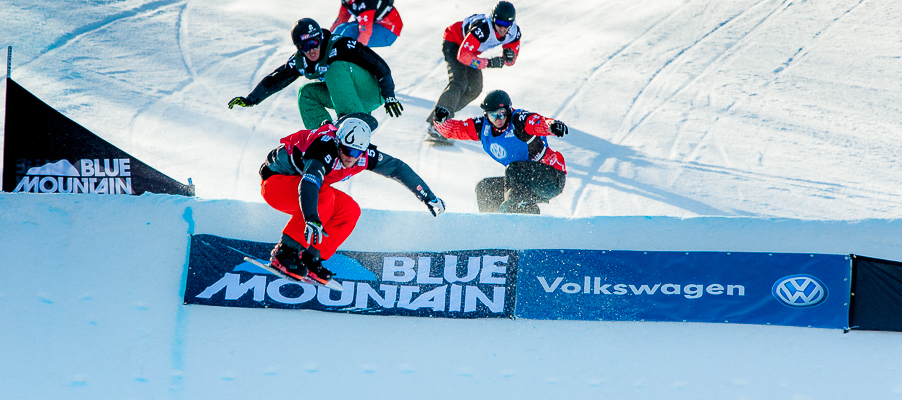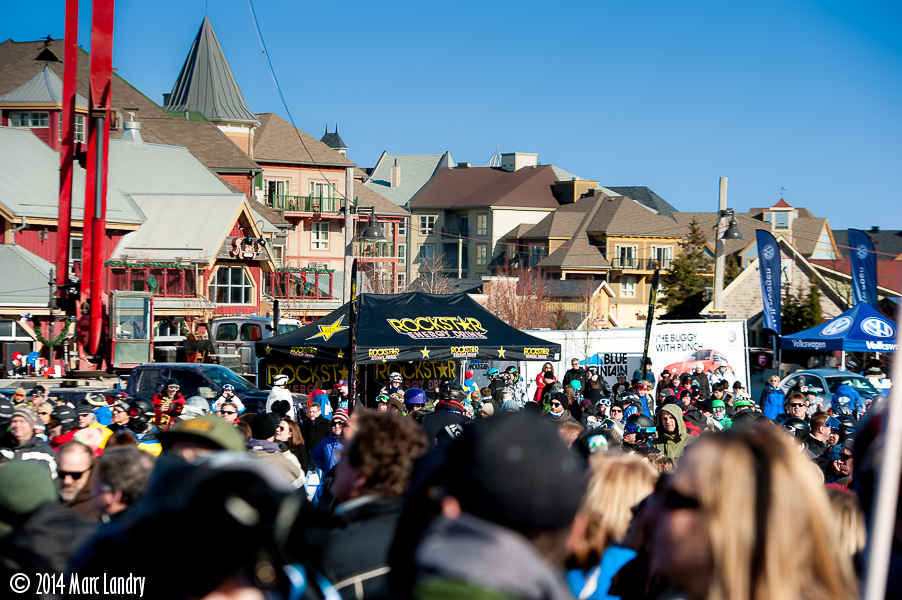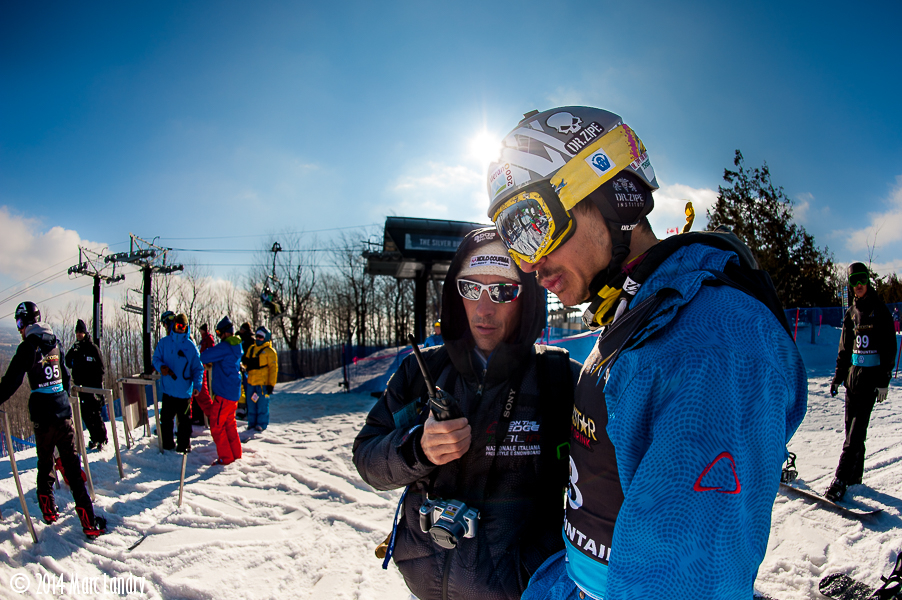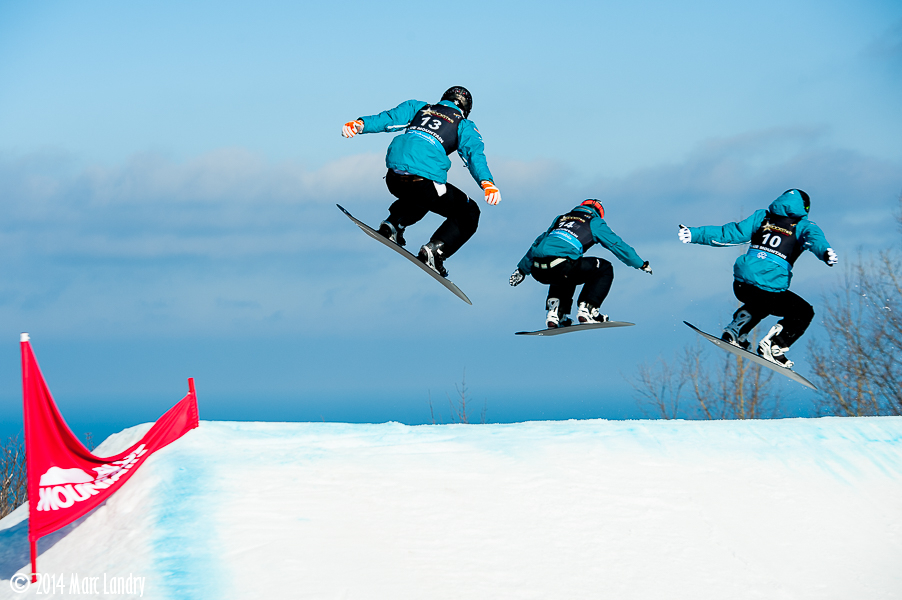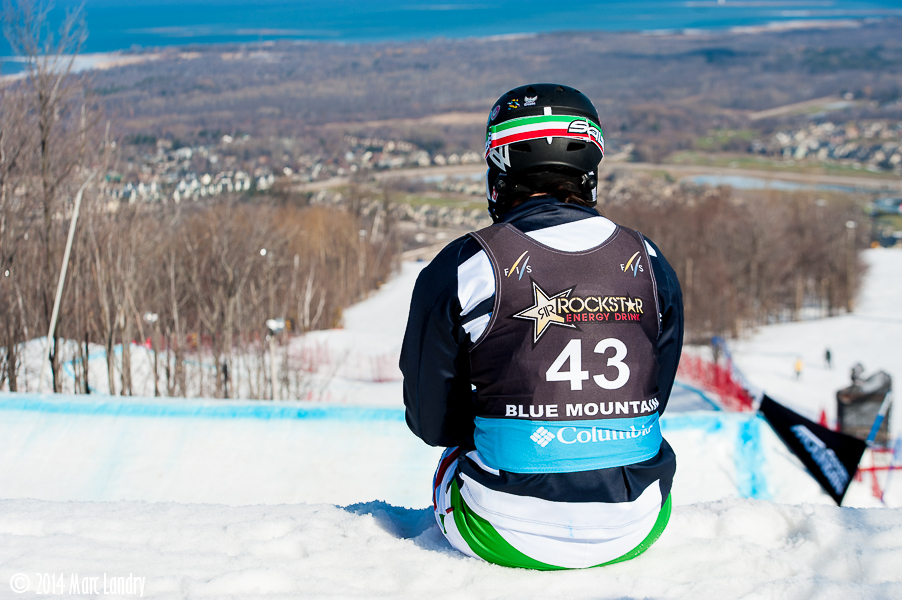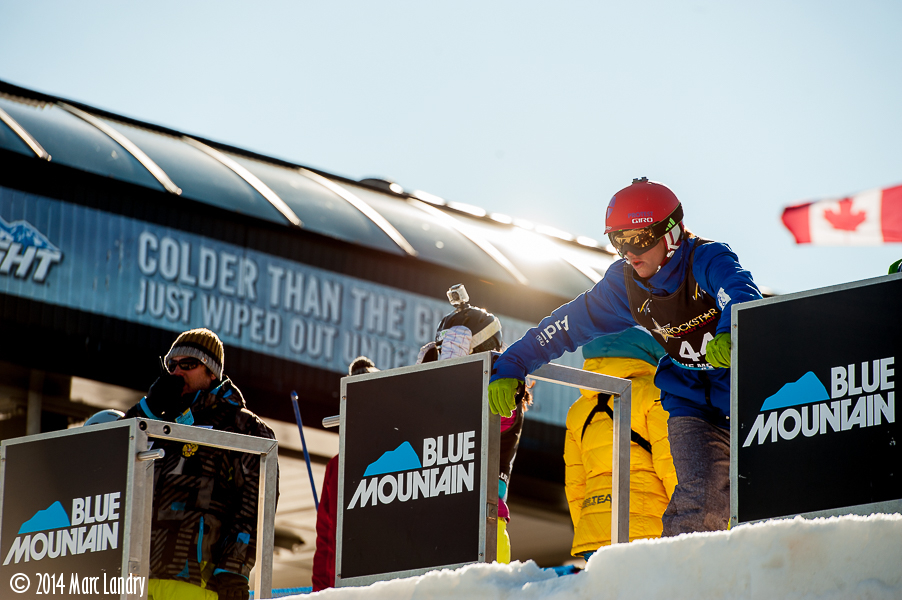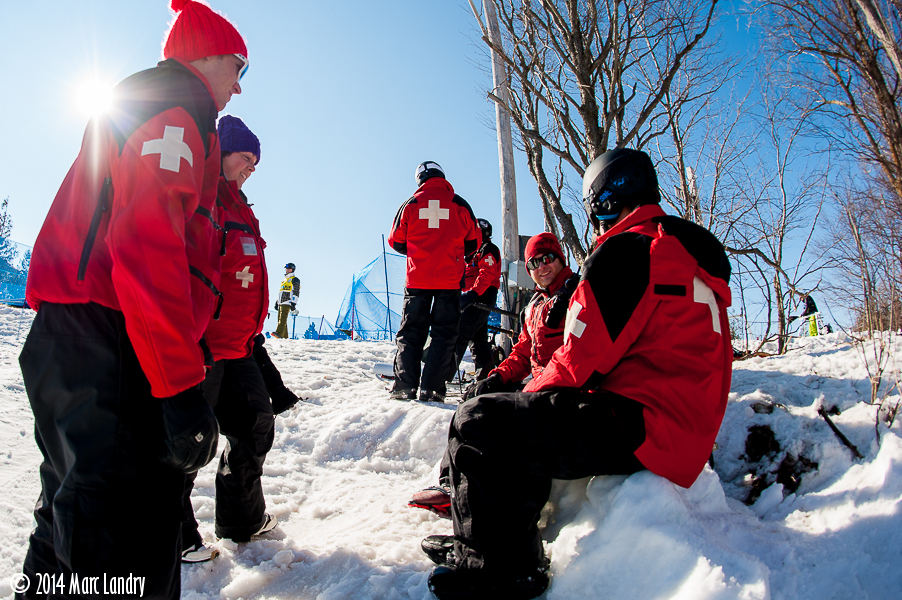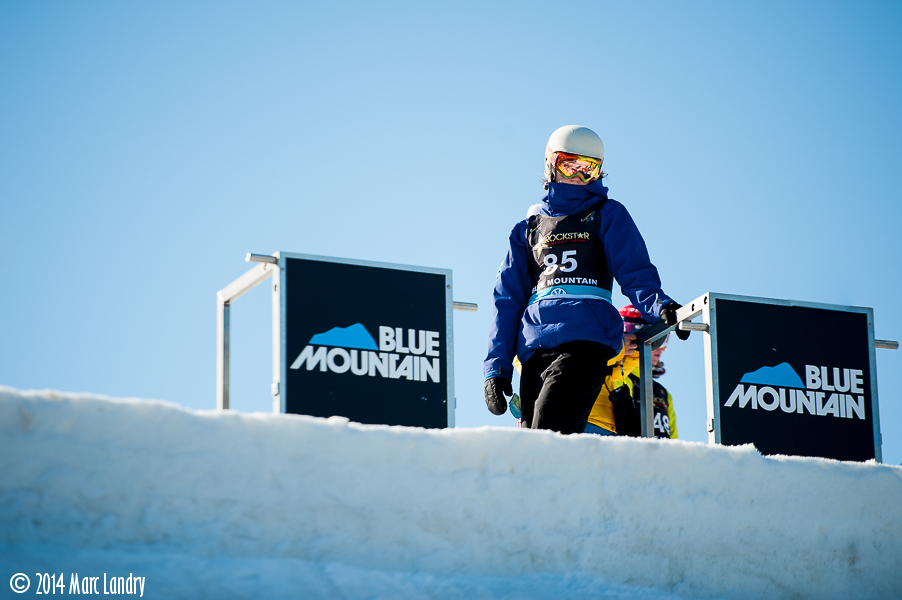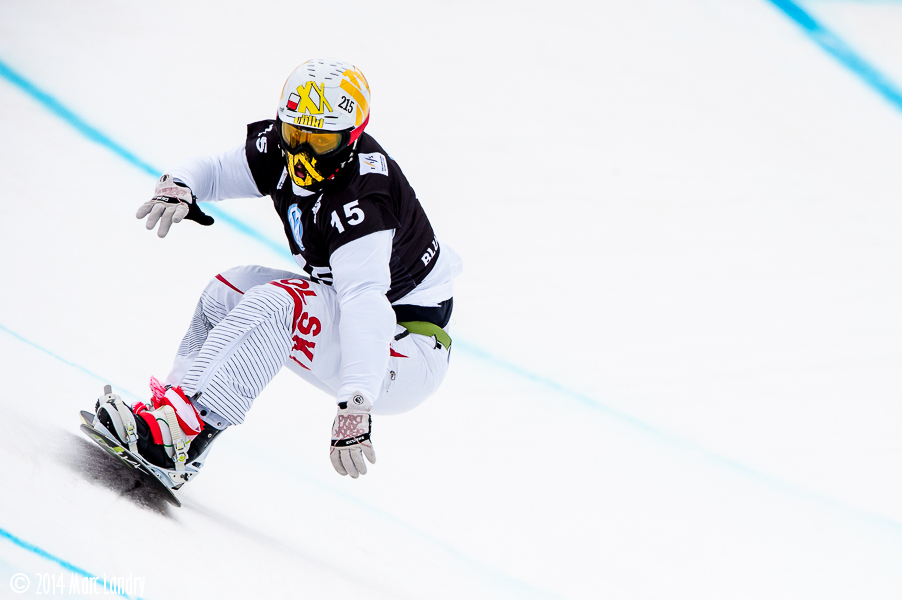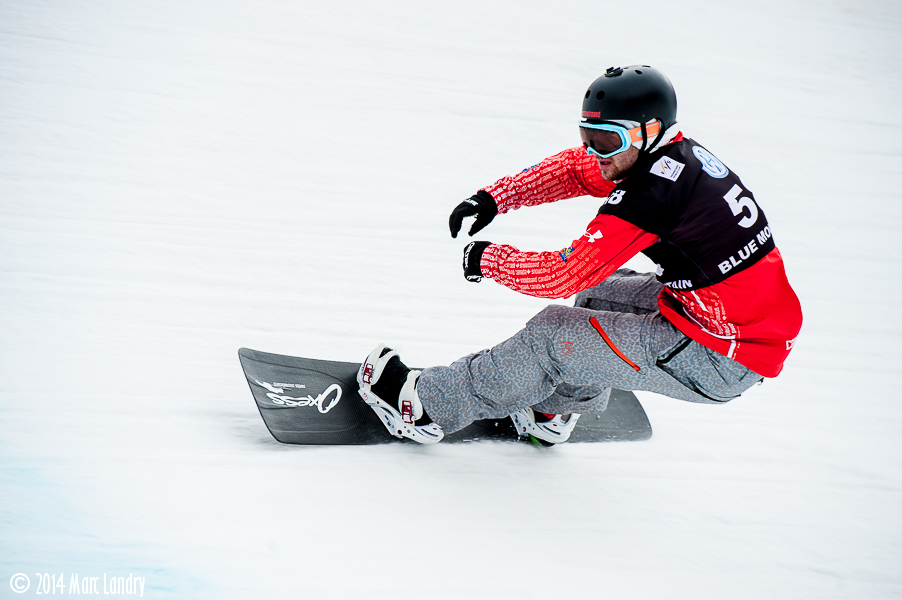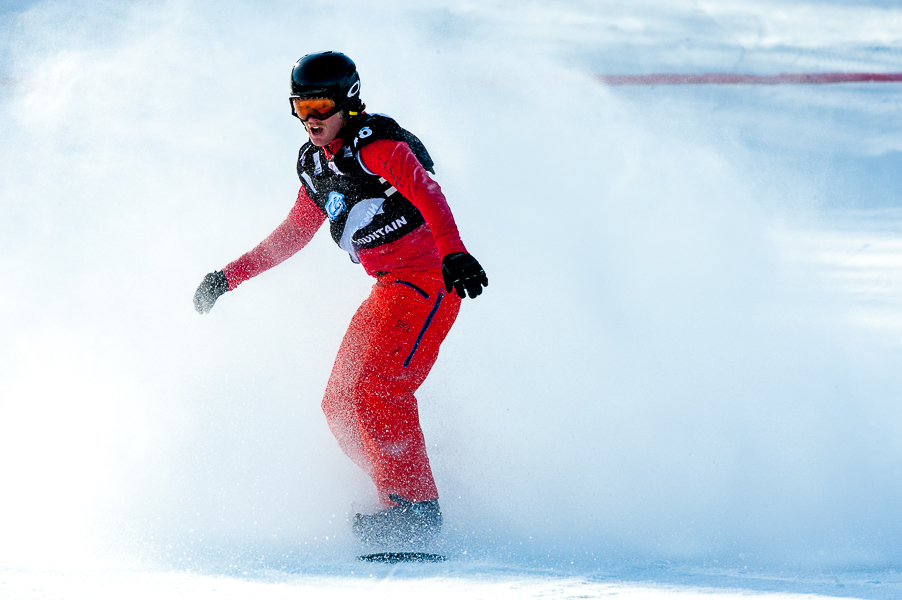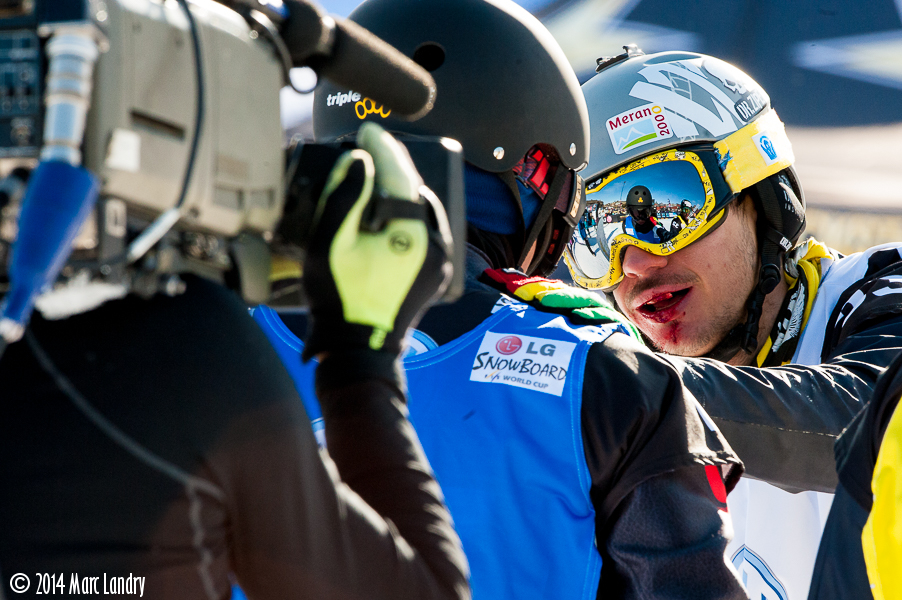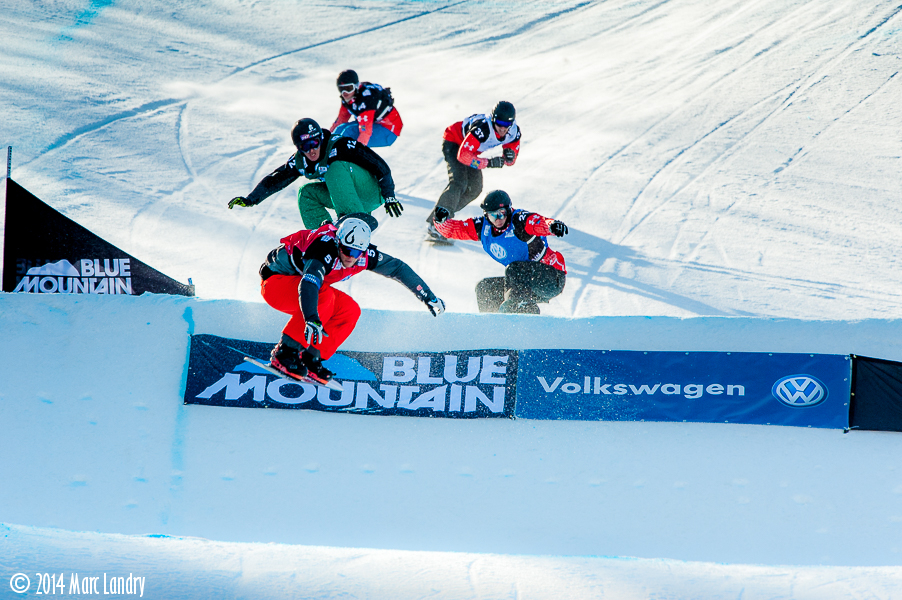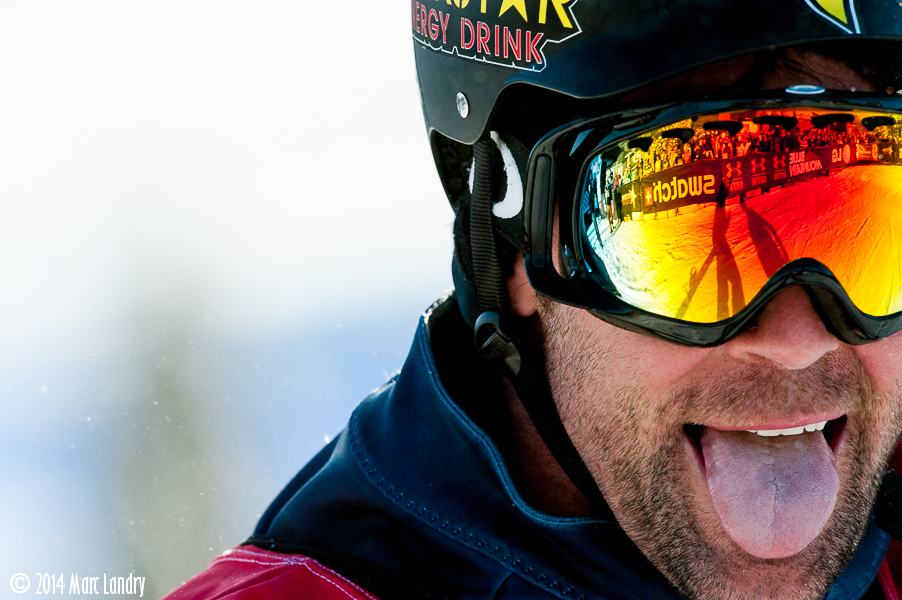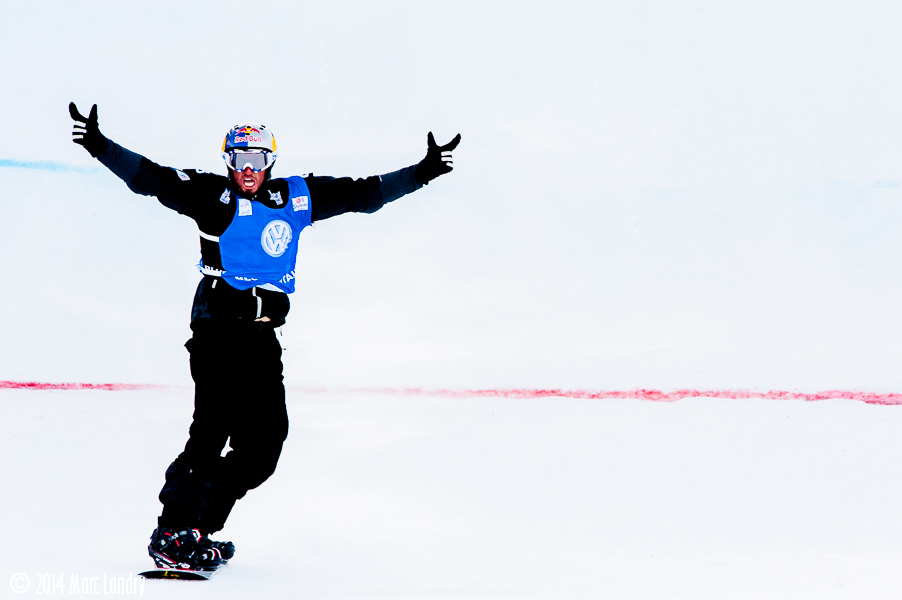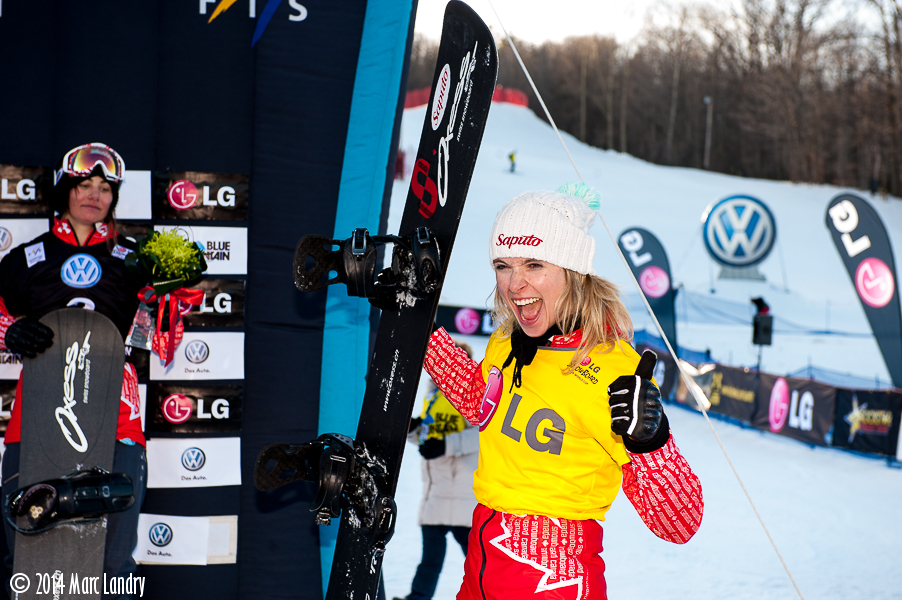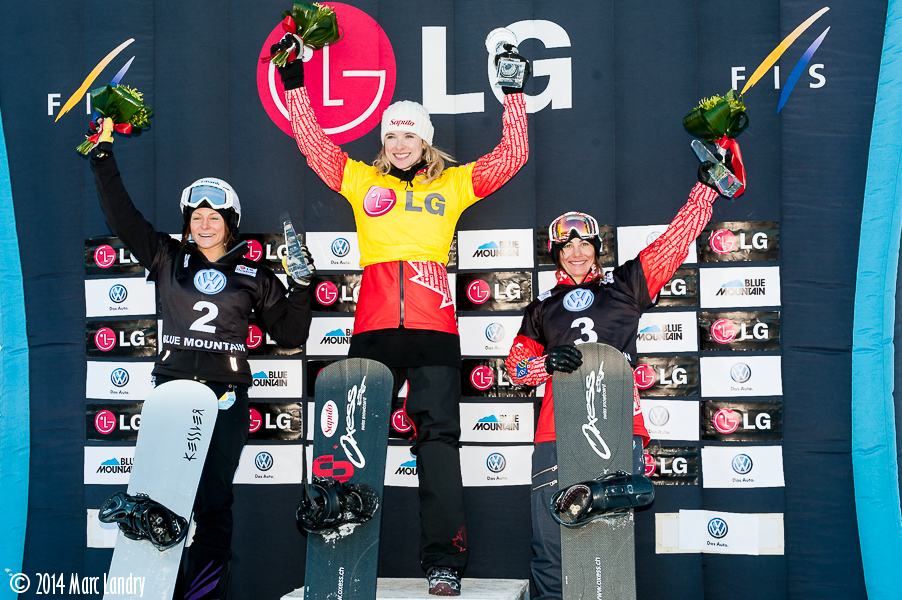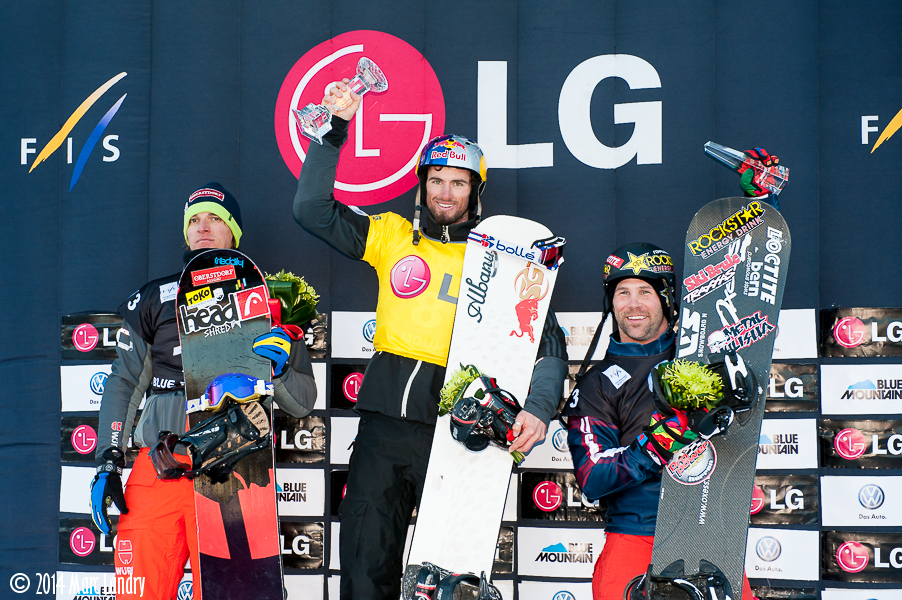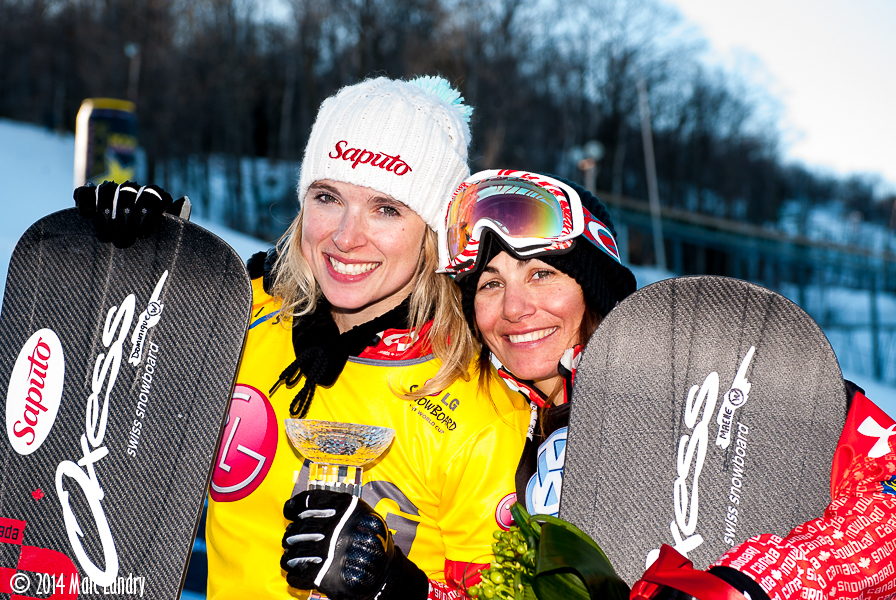Photo Report from 2012 FIS Snowboard Cross at Blue Mountain
Over the last week, I was up at beautiful Blue Mountain covering the two World Cups being hosted there this year. This was my third year covering the Audi FIS Ski Cross and my first covering the LG Snowboard Cross. Blue and the FIS showed incredible vision by pairing the two races as closely together as they did. Doing so ensured that any fence-sitters would be sure to add this event to their must-attend list. Professionals and enthusiasts alike now have every reason to spend the week at Blue. Both events had the strongest media presence I have seen to date and the coverage has been top-notch. Blue Mountain’s PR specialist, Collin Matanowitsch, did an amazing job handling the record number of media on hand. This tight scheduling also allowed Blue to hold a game of shinny between the Canadian Ski Cross and Snowboard Cross teams on the pond in the village. This event and the week of FIS World Cups at Blue were a complete success. Despite having one of the worst winters on record, everyone involved made the races run seamlessly. Athletes seemed stoked on the new course and spectators loved the action.
I had already been up at Blue for a few days covering the Ski Cross and had my game plan for this race fairly well laid out. Even though the course had significant changes made to it from previous years, the light is all that matters for me and its position is constant. The course is predominantly back-lit which makes getting well-exposed, crisp images a challenge. In that respect, I welcomed the overcast skies I had for most of my time spent on the hill. This allowed me to be unrestricted as far as the direction I chose to shoot in. The specular light of the sun is not very forgiving and if it’s not working for you, it’s very much against you. For most other events I cover, I would simply pull out my 1100/ws Elinchrom Ranger packs, play god (photographically speaking), and overpower the sun. The logistics of hauling battery packs up and down the hill are significant and I don’t think this is really the “look” for ski and snowboard racing. During practice and qualifying, I researched angles and did my best to make the most of what was possible under the conditions I had. I did my best to lend a helping hand to the other photogs on the hill who were covering the event for the first time. It’s not an easy race to nail and I think they appreciated the help.
For the race itself, I decided to position myself in the finish line corral. This is not something I typically do but I wanted to get something different from what I had in the past. I normally like to shoot one of the first corners to increase my odds of getting the group of riders together. The further down the course, the more likely the pack has been spread out or that the leader has broken away. The shot I wanted of the racers hitting the final jump was both back-lit and in the shade. This is a pretty nasty combo and there wasn’t a whole lot I could do about it. I was shooting with my 400mm f/2.8 in combination with a 1.4 teleconverter, which got me out to 550mm. I could have shot it at 800mm with the 2x tele’ but couldn’t afford to lose further light. Part of the appeal of the jump for me was to include the sponsors’ signage. For my composition to work, I had to strike a balance between shooting tight on the athletes but loose enough to include as much as I could – 550mm seemed to be the best focal length to achieve this.
What I was most looking forward to capturing from this vantage point were the emotions and expressions on the athletes’ faces. As a photographer, this is what I am drawn to most. I love the killer action but, to me, it’s meaningless without the emotion behind it. Athletes who compete in the sports I cover are usually wearing a helmet, goggles or something else that obscures part of or all of their face. Even when shooting really, really tight it’s difficult to capture their true passion. That and the fact that the end image would pretty much look like a really well-protected floating head. For an action shot to be successful, you need the entire subject and context, such as the jump, gate or finish line. If you’re shooting tennis or track, this is possible to execute but is not as easily achieved for my subject matter. It was also important to me that I was able to incorporate the crowd, village and sponsors in my composition. My finish line position would allow me to record this as well as the the athlete’s reaction of victory or defeat.
This year, the awards ceremony was held immediately after the race in the finish line corral. For the Ski Cross, I was about half way up the hill and just made it down in time to get my shot. I didn’t want to roll the dice again as the podium shots are key. I would have had to make my move late in the race, which would have meant potentially missing an important heat. It’s pretty dicey at spots along the course. The organizers don’t like people moving about during the race and I don’t much either. I know that one of the other photographers busted a lens during a fall while scrambling to get the shot.
It was a bit like juggling cats for me during the finals (no cats were harmed in the writing of this blog). I had two bodies on the go and a belt pack with a variety of glass, speedlights and other pieces of kit. I had a 400mm f/2.8 on my D3 and a 70-200mmf/2.8 on my D700. I had the 400mm on a monopod which was prefocused on the final jump. Once I got the jump shot, I had to instantly drop that camera and grab my second body to capture the racers as they crossed the finish line. It would have been nice to have a big zoom like the 200-400mm f/4 but I simply could not have afforded the loss of light. There was about a 4 stop difference between the jump and the corral so the time it would have taken me to make exposure changes may have been longer than the physical swap between bodies I was performing. There was of course the option of shooting in one of the automated exposure modes but that’s not how I roll. It felt like I had under two seconds to make the switch. It would have been nice to set up a remote camera but there simply were not many suitable locations. I had a great time covering this event and hope you like my images.
Huge thanks to all the staff at Blue and FIS for making these events a hit. As always, I couldn’t have done it without the help of Amanda, Jeffrey, Paul and the fine folks at Nikon Canada who keep me shooting.
